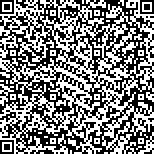谢凌锋、黄晓琳、黄杰、程群、周志忠、闫勃.不同策略生物反馈训练对脑卒中偏瘫患者静态平衡功能的影响[J].中华物理医学与康复杂志,2016,38(4):254-258
扫码阅读全文

|
| 不同策略生物反馈训练对脑卒中偏瘫患者静态平衡功能的影响 |
|
| |
| DOI: |
| 中文关键词: 生物反馈训练 静态平衡 脑卒中 |
| 英文关键词: Biofeedback Training Static balance Stroke |
| 基金项目: |
|
| 摘要点击次数: 3455 |
| 全文下载次数: 5447 |
| 中文摘要: |
| 目的 观察不同策略生物反馈训练对脑卒中偏瘫患者静态平衡功能的影响。 方法 采用随机数字表法将2014年6月至2015年4月期间在我院住院治疗的32例脑卒中偏瘫患者分为实时反馈(KP)组、结果反馈(KR)组及对照组。各组患者分别接受为期4周的常规康复干预;对照组、KP组及KR组在此基础上分别接受每天30min的自主平衡训练、视听实时反馈训练或阶段性运动结果反馈训练。于训练前、后分别采用Berg平衡量表(BBS)及便携式反馈设备评测各组患者静态平衡功能改善情况。 结果 治疗后KP组患者Berg量表总分提高幅度[(3.08±1.08)分]显著大于KR组及对照组(P<0.05),而KR组Berg量表总分与对照组间差异无统计学意义(P>0.05);KP组患者闭眼无支撑站立、双足前后站立评分的改善程幅度[分别为(0.92±0.79)分和(0.83±0.39)分]亦明显大于KR组及对照组(P<0.05);治疗后KP组双足并拢站立和双足前后站立时其重心偏移角度[前向分别为(2.83±0.93)°和(6.15±1.85)°、后向为(2.56±0.88)°和(5.97±1.74)°、左向为(2.86±1.16)°和(6.49±2.42)°、右向为(2.68±1.43)°和(5.98±2.05)°]均较KR组及对照组明显减小(P<0.05);治疗后KR组Berg量表其他指标评分及不同站立姿势下重心偏移角度与对照组间差异均无统计学意义(P>0.05)。 结论 通过动态人体重心和支撑面积监测系统进行实时生物反馈平衡训练能有效改善脑卒中偏瘫患者静态平衡功能,其疗效优于常规平衡功能训练及结果反馈式训练,该疗法值得临床进一步研究、推广。 |
| 英文摘要: |
| Objective To compare the static standing balance of stroke patients after different biofeedback protocols. Methods Thirty-two stroke patients were randomly divided into a knowledge of performance (KP) group, a knowledge of results (KR) group and a control group. All 3 groups received 4 weeks of conventional rehabilitation training plus another 30min of static standing balance training per day. The KP group received audio-visual feedback in real time during the training. The KR group received section result feedback. The control group received no feedback during the extra balance training. Before and after the training, the performance of the 3 groups was evaluated using Berg′s Balance Scale (BBS) and a portable biofeedback device. Results Average BBS performance improved significantly more in the KP group (3.08±1.08) than in KR group (1.30±0.67) and control group (1.20±0.79) (P<0.05). No significant difference was detected between the KR and control groups (P>0.05). The average improvements of the KP group in terms of Standing with Eyes Closed and Tandem Standing (0.92±0.79 and 0.83±0.39) were significantly higher than those in the KR (0.30±0.48 and 0.20±0.42) and control groups (0.01±0.01 and 0.40±0.52) (P<0.05). Average trunk angular displacements in all four directions [Anterior (2.83±0.93; 6.15±1.85), Posterior (2.56±0.88; 5.97±1.74); Left (2.86±1.16; 6.49±2.42), Right (2.68±1.43; 5.98±2.05)] in the KP group was significantly higher than in the others (P<0.05). No significant differences were detected between the KR and control groups in BBS results or in posture. Conclusions Static standing training should incorporate real time biofeedback. It is then more effective than conventional standing training or training with section results feedback. It is worth spreading in clinical applications. |
|
查看全文
查看/发表评论 下载PDF阅读器 |
| 关闭 |